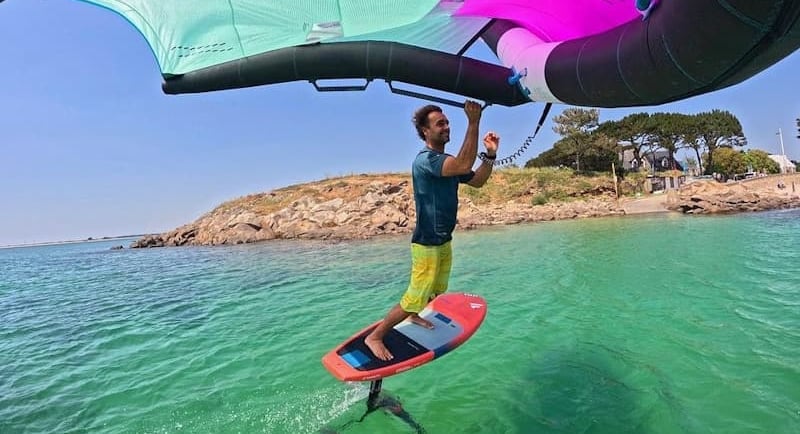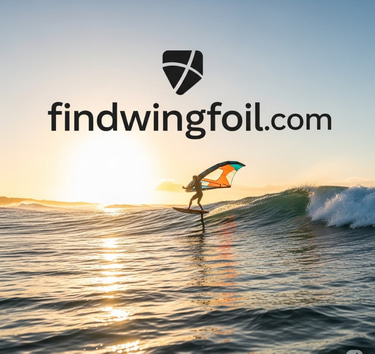Age-Friendly Wing Foiling: Yes, You Can Start at 60+
This guide will explore how older adults can safely start wing foiling, what gear is best suited, and inspiring stories of senior riders who are crushing it on the water.
RM
7/8/20254 min read


Age-Friendly Wing Foiling: Yes, You Can Start at 60+ – Your Guide to Graceful Gliding
Wing foiling is rapidly gaining popularity as an exciting and accessible water sport. While often associated with younger athletes, more and more seniors—those 60 and older—are discovering that wing foiling for seniors can be an enjoyable, low-impact activity that offers both remarkable physical and mental benefits. This comprehensive guide will explore how older adults can safely start wing foiling at 60+, what beginner wing foiling gear is best suited for mature riders, or used wing foiling gear, and inspiring stories of senior riders who are truly crushing it on the water.
Why Wing Foiling is an Excellent Choice for Seniors
Wing foiling stands out as a fantastic activity for older adults due to several key advantages:
Low Impact on Joints: Unlike traditional surfing or high-impact sports, the gliding nature of foiling significantly reduces stress on knees, hips, and other joints.
Adjustable Intensity: You control the pace. Depending on wind and water conditions, you can enjoy a leisurely cruise or a more dynamic ride, tailoring the intensity to your comfort level.
Physical & Mental Benefits: This sport is a superb way to build balance and coordination, strengthen your core, and improve cardiovascular health. The mental engagement of learning a new skill and being out on the water also offers significant cognitive and mood-boosting benefits.
Social Opportunities: The burgeoning wing foiling community is incredibly welcoming. Joining local groups and schools provides fantastic opportunities to meet like-minded individuals and share experiences.
Physical Demands and Joint Safety: A Progressive Approach
While wing foiling involves a combination of balance, coordination, and moderate upper body strength, the key for seniors is to approach the sport progressively and safely:
Start with Lessons: Begin with certified wing foiling lessons focused on land drills to build fundamental wing control and confidence before hitting the water.
Stable Boards: Opt for wing foil boards for beginners with a larger surface area and higher volume (e.g., 140–160 liters) to provide maximum stability and ease of standing.
Manageable Wings: Select wings sized for easier handling in lighter winds (typically 4m²–6m² for beginners). Choosing a wing that helps you get up to speed and on plane fastest will reduce physical exertion.
Warm-Up & Stretch: Always perform a thorough warm-up and gentle stretches before each session to prepare your muscles and protect your joints.
Recommended Gear for Seniors: Optimized for Comfort and Progress
Choosing the right equipment is crucial for a safe and enjoyable learning experience for older adults:
Boards: As mentioned, larger, more buoyant boards (around 140-160 liters) are ideal. They provide the stability needed for easier water starts and reduce the effort required to get on foil. Some beginners even start with inflatable boards for added safety and softness.
Wings: Medium to large wings (4-6m²) offer better control and require less physical exertion to generate lift. Focus on a wing that allows for quick and efficient planing.
Foils: Opt for beginner-friendly hydrofoils with a lower mast height (e.g., 60-75cm). This reduces the risk of falls and makes balancing easier. Choose large front wings (1850 cm² and up) as they provide more lift at slower speeds, crucial for learning.
Safety Gear: A wing foiling helmet, impact vest (or buoyancy aid), and a board leash are absolutely essential, especially when starting out. Prioritizing safety gear protects you from unexpected falls and impacts.
Finding the Right Instructor & Lessons: Tailored for You
Look for schools and instructors experienced in adaptive or senior-friendly teaching methods. Many reputable schools offer private lessons that can be tailored to your individual pace, fitness level, and learning style. Check our directory of beginner-friendly wing foil schools to find an instructor near you who understands the nuances of teaching older adults.
Safety Tips and Health Precautions: Ride Smart, Stay Safe
Your well-being is paramount. Always keep these safety tips in mind:
Consult a Physician: Before starting any new sport, especially after 60, always consult your physician to ensure you are fit for the activity.
Weather & Water Conditions: Initially, avoid extremes of weather and water conditions. Start in light to moderate winds (10–15 knots) and calm, flat water.
Buddy System/Supervision: Always go out with a buddy or under the supervision of an instructor, especially when learning.
Practice Safe Falling: Learn and practice safe falling techniques to minimize the risk of injury from the board or foil. Know how to get back on your board efficiently.
Community & Social Benefits: Connect and Thrive
Joining local wing foiling groups or events is a fantastic way to meet like-minded seniors and stay motivated. Many clubs host age-friendly meetups and workshops, fostering a supportive environment. You can also participate in community events and eco-friendly wing foiling initiatives tailored to all ages, enriching your experience beyond just riding.
Conclusion: Age is Just a Number on the Water
Age is truly no barrier to experiencing the thrill and freedom that wing foiling offers. With the right preparation, suitable gear, and supportive instruction, anyone 60+ can enjoy this exhilarating sport safely and reap immense benefits for both mind and body. Ready to start your age-friendly wing foiling journey? Explore our beginner's guide and gear recommendations to get started – the water is waiting!
Frequently Asked Questions (FAQs) for Age-Friendly Wing Foiling
Here are some common questions older adults have about starting wing foiling:
1. Is wing foiling safe for older adults, especially those over 60? Yes, wing foiling can be very safe for older adults, particularly when approached progressively with proper instruction and appropriate gear. It's a low-impact sport, and the ability to easily depower the wing contributes to its safety profile. Always consult a physician before starting.
2. What type of wing foiling gear is recommended for seniors or beginners? Seniors and beginners should prioritize larger, more buoyant boards (140-160+ liters) for stability, medium to large wings (4-6m²) for easier handling, and beginner-friendly foils with lower mast heights (60-75cm) and large front wings (1850cm²+) for early lift. Essential safety gear includes a helmet, impact vest, and leash.
3. How long does it typically take for an older adult to learn wing foiling? The learning curve varies for everyone, but with consistent lessons from a certified instructor, many older adults can achieve basic foiling within 5-10 sessions. Prior experience with other board or wind sports can sometimes accelerate this process.
4. Are there specific physical exercises or preparations recommended for seniors before starting wing foiling? Focus on exercises that improve balance, core strength, and moderate upper body strength. Activities like yoga, Pilates, swimming, and light resistance training can be very beneficial. Always include a good warm-up and stretching routine before each session.
5. Where can older adults find wing foiling schools or communities that cater to their age group? Many wing foiling schools offer private lessons that can be tailored to individual paces, including those of older adults. Look for schools that emphasize safety and progressive learning. Local wing foiling clubs and online communities are also great resources for connecting with age-friendly groups and finding suitable locations.
Connect
Explore wing foiling schools, vendors, and events.
Support
Learn
801-554-1050
© 2025. All rights reserved.
